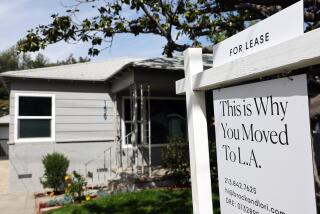Elderly Have Wide Choice in Housing
Until recently, most older persons simply stayed put in the family homestead and tried to keep up with the chores and expenses. Some others opted for rental apartment living. And, of course, the venturesome retirees sold the homestead and moved to a warmer climate.
Now, choices for retired or near-retirement persons have increased. Why? Most importantly, there are so many more 60-ish Americans who can afford to change their way and place of living.
A goodly number are even wealthy enough to keep up their family home where winters are cold and still have enough money to spend most of the cold season in a sunshine space they own or rent.
This Washington area has long provided another dimension of the older adult housing market--attractive rental and condo apartments. More adult and retired Washingtonians now are choosing high-rise apartments to obtain maximum security and an ambiance that precludes grass-cutting, garden-tending, painting and ridding rain gutters of leaves.
This trend to adult apartment living is such that the now 20-year-old Rossmoor Leisure World community no longer builds new low-rise apartments or single-family dwellings.
This world capital has a tradition of housing many retired persons, of whom federal employees predominate. A long chain of eight-to-10 story rental apartment buildings stretches from downtown to the D.C.-Maryland line on Connecticut Avenue NW, which is regarded as a most desirable living area. Many of those scores of apartment buildings have become condo conversions, and a few are targeted only for older persons.
If there’s been a significant change in the pattern of living for America’s graying and white-haired citizens, it’s their increasing disposition to change addresses after reaching age 55 or 60 or 65 or 70. Often they have substantial profits from selling their life-long homes, and the Internal Revenue Service tax forgiveness on $125,000 of that profit is enticing.
Life-care apartment buildings that cater to affluent persons who want meal and health services in an atmosphere considerably more pleasant than convalescent or nursing homes are also making an impact across the land. One has been started near Annapolis, Md., where Life Care Services Corp., already has picked up deposits for more than 130 of the 242 small apartments to be built. Entrance fees range from $100,000 to $200,000 and monthly fees up to $2,000 for a couple.
Elder seniors are choosing this way of life, if they can afford it, in order to be served one or more daily meals and get recreation and housekeeping help plus--maybe most poignantly--assurance of lifetime care in the retirement center’s own nursing home.
If nothing else has been proved in this area, it’s that rental apartments in a suburban community have difficulty finding a market among older seniors capable or willing to pay about $1,500 a month for a small apartment and two meals a day on the premises. Some elderly persons have been disappointed at the level of services provided.
Conversions of schools and mills into housing for the elderly provide another stimulating aspect of the adult housing market, according to a study by the American Assn. of Retired Persons (AARP). An old cotton mill in Waltham, Mass. now contains 258 dwellings for older and handicapped persons as part of a federal Section 8 program.
In Richmond, Va. an old hospital was similarly converted, and now has 113 units of subsidized housing for older people. In Lexington, Mass., a similar conversion started with an abandoned junior high school building.
Altogether, more than 100 cities have one or more older buildings adapted for reuse as housing for elderly persons. More information on alternative housing for our elderly persons is available from Larry McNickle, U.S. Conference of Mayors, 1620 Eye St., NW, Washington, D.C. 20006.
Still another retirement housing option gaining adherents is the beach/resort community, which mainly appeals to vacationers during warm months. One neighbor in our over-45 adult community moved to the beach a few days ago.
They changed locations after Mr. Breadwinner retired from federal employment. Now they are living within half a mile of the Atlantic Ocean, and the 59-year-old breadwinner expects to find some employment. They will be among dozens of retired year-round residents who have the nearby beaches to themselves during the off-season.
Yes, choices truly multiply for retirement housing.
More to Read
Inside the business of entertainment
The Wide Shot brings you news, analysis and insights on everything from streaming wars to production — and what it all means for the future.
You may occasionally receive promotional content from the Los Angeles Times.










